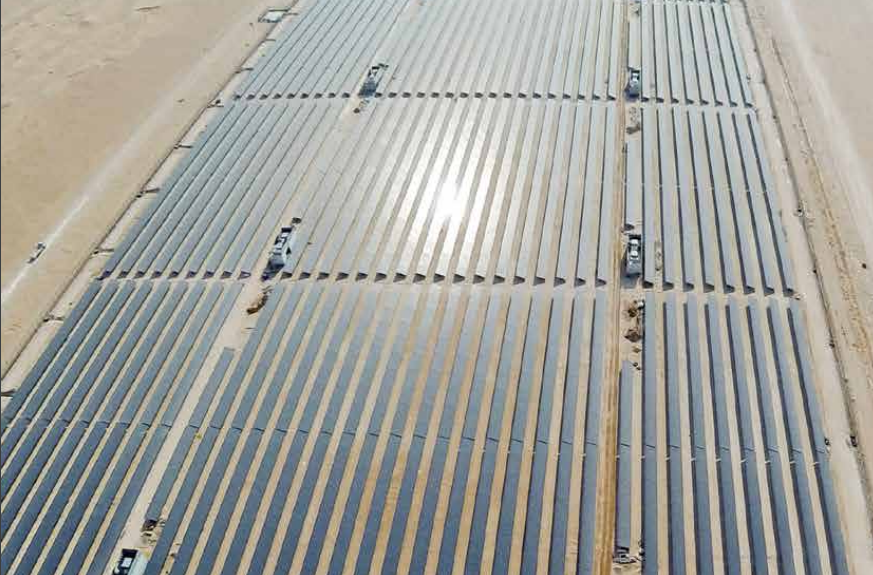Last week, the Dubai Electricity and Water Authority (DEWA) announced that the second phase of the Mohammed bin Rashid Al Maktoum Solar Park is 80% complete. It is good news for the project that broke solar pricing records when the tender was completed in 2015, as some industry onlookers questioned the viability of such low prices.
The second phase of the project is for 200 MW of solar capacity. When the tender was completed for this phase in 2015, DEWA set a world record for the lowest price obtained for solar power at $0.056 per kWh. This was a shockingly low price at the time, but prices have since fallen even more dramatically in the region, with a price of $0.0242 entered at a tender for PV power in Abu Dhabi in September 2016.
DEWA announced that 80% had actually been completed in mid-December, and that 75% od the 2.2 million PV modules had been installed at the plant. The second phase is now on course to meet its completion target of April 2017. DEWA is the majority shareholder in the project with a stake of 51%, while Saudi Arabia’s ACWA Power and Spain’s TSK holding the remaining stake.
“Completing 80% of this strategic project, with a total of 1 million man hours logged, reflects the intensive efforts made by the team,” commented Chairman of ACWA Power Mohammad Abdullah Abunayyan.
The Mohammed bin Rashid Al Maktoum Solar Park will be the world’s largest single-site solar park based on the Independent Power Producer model (IPP). The capacity targets for the park have been set at 1 GW by 2020, and 5 GW by 2030, with total investment expected to reach USD 13.6 billion.
“All projects included in the Mohammed bin Rashid Al Maktoum Solar Park adhere to the Dubai Clean Energy Strategy 2050, to transform Dubai into a global center for clean energy and green economy,” said DEWA CEO HE Saeed Mohammed Al Tayer. “The strategy sets the target to generate 5,000 MW of solar power by 230. Clean energy will generate 7% of Dubai’s total power output by 2020, 25% by 2030, and 75% by 2050.”
This content is protected by copyright and may not be reused. If you want to cooperate with us and would like to reuse some of our content, please contact: editors@pv-magazine.com.



1 comment
By submitting this form you agree to pv magazine using your data for the purposes of publishing your comment.
Your personal data will only be disclosed or otherwise transmitted to third parties for the purposes of spam filtering or if this is necessary for technical maintenance of the website. Any other transfer to third parties will not take place unless this is justified on the basis of applicable data protection regulations or if pv magazine is legally obliged to do so.
You may revoke this consent at any time with effect for the future, in which case your personal data will be deleted immediately. Otherwise, your data will be deleted if pv magazine has processed your request or the purpose of data storage is fulfilled.
Further information on data privacy can be found in our Data Protection Policy.